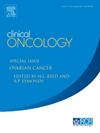放射肿瘤学的结构质量指标:见解和影响。
IF 3.2
3区 医学
Q2 ONCOLOGY
引用次数: 0
摘要
目的:过去二十年来,放射治疗(RT)领域在质量指标(QIs)的开发方面取得了重大进展。然而,大多数文献主要关注过程和结果相关的质量指标,对结构性质量指标的关注有限。本综述旨在通过深入探讨放疗领域的结构性质量指标,并研究在全球放疗机构中建立这些指标的通用标准所涉及的复杂性和注意事项,来弥补这一不足:方法:利用 PubMed 搜索策略、当前的综述论文、国家和国际指南和报告以及个人在该领域的专业知识,对每个子课题已发表的证据进行了广泛审查:考虑到它们对治疗结果的直接影响,本文确定了五项结构性 QI,以确保 RT 治疗的质量。它们是工作量、基础设施、机器停机时间、培训的充分性和获得 RT 服务的机会:结论:制定 RT 结构性质量指标的国际指南可显著提高治疗效果。实现这一目标的第一步是评估中低收入国家(LMICs)所面临的限制,并制定切实可行的解决方案来克服这些挑战。本文章由计算机程序翻译,如有差异,请以英文原文为准。
Structural Quality Indicators in Radiation Oncology: Insights and Implications
Aims
Over the past two decades, significant progress has been made in the development of quality indicators (QIs) within the field of radiotherapy (RT). However, most of the literature has predominantly focused on process and outcome-related QIs, with limited attention given to structural QIs. This review aims to address this gap by providing insights into structural QIs in RT and examining the complexities and considerations involved in establishing universal standards for these indicators across RT facilities globally.
Methods
An extensive review of published evidence in each sub-topic was performed using PubMed search strategies, current review papers, national and international guidelines and reports, and personal expertise in the field.
Results
Considering their direct impact on treatment outcomes, this article identifies five structural QIs to ensure quality treatment in RT. They are workload, infrastructure, machine downtime, adequacy of training, and access to RT services.
Conclusions
Developing international guidelines for structural QIs in RT can significantly enhance treatment outcomes. The first step toward achieving this goal is to assess the limitations faced by lower and middle-income countries (LMICs) and devise practical solutions to overcome these challenges.
求助全文
通过发布文献求助,成功后即可免费获取论文全文。
去求助
来源期刊

Clinical oncology
医学-肿瘤学
CiteScore
5.20
自引率
8.80%
发文量
332
审稿时长
40 days
期刊介绍:
Clinical Oncology is an International cancer journal covering all aspects of the clinical management of cancer patients, reflecting a multidisciplinary approach to therapy. Papers, editorials and reviews are published on all types of malignant disease embracing, pathology, diagnosis and treatment, including radiotherapy, chemotherapy, surgery, combined modality treatment and palliative care. Research and review papers covering epidemiology, radiobiology, radiation physics, tumour biology, and immunology are also published, together with letters to the editor, case reports and book reviews.
 求助内容:
求助内容: 应助结果提醒方式:
应助结果提醒方式:


